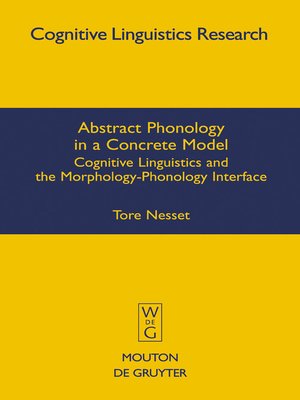Abstract Phonology in a Concrete Model
ebook ∣ Cognitive Linguistics and the Morphology-Phonology Interface · Cognitive Linguistics Research [CLR]
By Tore Nesset

Sign up to save your library
With an OverDrive account, you can save your favorite libraries for at-a-glance information about availability. Find out more about OverDrive accounts.
Find this title in Libby, the library reading app by OverDrive.



Search for a digital library with this title
Title found at these libraries:
| Library Name | Distance |
|---|---|
| Loading... |
This book is relevant for phonologists, morphologists, Slavists and cognitive linguists, and addresses two questions: How can the morphology-phonology interface be accommodated in cognitive linguistics? Do morphophonological alternations have a meaning? These questions are explored via a comprehensive analysis of stem alternations in Russian verbs. The analysis is couched in R.W. Langacker's Cognitive Grammar framework, and the book offers comparisons to other varieties of cognitive linguistics, such as Construction Grammar and Conceptual Integration. The proposed analysis is furthermore compared to rule-based and constraint-based approaches to phonology in generative grammar.
Without resorting to underlying representations or procedural rules, the Cognitive Linguistics framework facilitates an insightful approach to abstract phonology, offering the important advantage of restrictiveness. Cognitive Grammar provides an analysis of an entire morphophonological system in terms of a parsimonious set of theoretical constructs that all have cognitive motivation. No ad hoc machinery is invoked, and the analysis yields strong empirical predictions. Another advantage is that Cognitive Grammar can identify the meaning of morphophonological alternations. For example, it is argued that stem alternations in Russian verbs conspire to signal non-past meaning.
This book is accessible to a broad readership and offers a welcome contribution to phonology and morphology, which have been understudied in cognitive linguistics.







